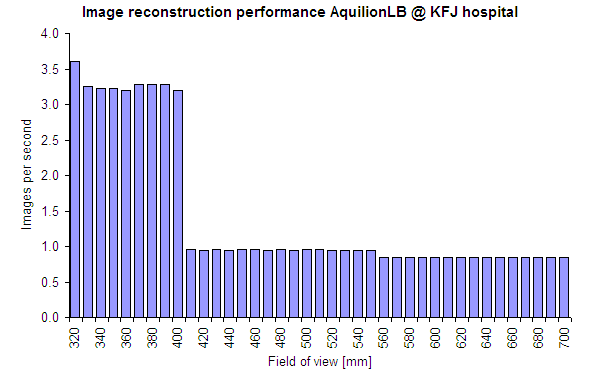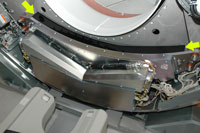Background
When a new medical imaging device shall be purchased, one usually comes to a point where specsheets of the different vendors are compared. But when it comes to realistic performance parameters of CT machines, there are not many sources of information available (it's up to you whether sales agents count as a reliable source of information).
The Problem: Lack of Information
Regarding large bore CT scanners, the Centre for Evidence-based Purchasing (CEP), which can be found on the internet at www.impactscan.org, offers some useful reports, which should help in the purchasing process. One report contains comparative technical specifications.
However, specsheets have drawbacks, for at least three reasons:
- If the vendor is the source of information (no independent test), performance data may be given for unrealistic conditions. If the vendor is free to choose, he will naturally choose the conditions (machine parameters) that will produce the best results, even if the conditions are not typical for daily use. If the questions are not stated clearly enough, the vendors will interpret them in their favour.
- If it is collected data (like in the CEP reports), during the collection process at some point some human has to fill out some questionnaire. Thereby he or she may misinterpret questions. For instance, in the CEP08029 report on page 63, Siemens answers the tricky question: "When first installed in UK?" with "38412", while Philips answers with "2005". At least they wrote down something - "Info not available" is also very common. Another example on page 13 of the same report is the equally tricky question "Maximum clearance in gantry [cm]?". This parameter is quite important if the scanner is to be used for radiotherapy planning, because it tells you how much space there is for the patient if she is positioned on a breast board, for instance. See our interpretation of clearance. Toshiba answers with "58", which is reasonable (we measured 73.5). Philips answers with "17.8", which we can hardly believe. We think the Philips guys misinterpreted the question in some way. Maybe they measured under the overlay, not above.
- Sometimes the important questions are simply not asked. We will come back to this point on another page.
We have decided to buy a Toshiba AquilionLB last year, for a number of reasons. In the process, we often had the feeling to decide in doubt - due to the poor information situation. Except for the CEP reports, the WWW was no great help either.
The Solution: Visit Our Site!
The situation has to be improved. On this and some more pages to come (on other topics), we want to present the results of our performance analyses regarding our own CT scanner. All measurements are done as objectively as possible, and the processes are (hopefully) described as clearly and completely as possible, so that they will hopefully be useful to you.
Image Reconstruction Performance - Our Results
No special tools are required for the tests, and you may easily reproduce them. If you want to be very accurate, use a stopwatch.
We scanned a phantom with our standard head & neck protocol (settings: see sidebar). We measured the time (in seconds) from the end of the scan to the point where the image counter on the scan console reached zero. (The image counter, counting down, displays the number of slices which still have to be reconstructed.) When the counter has reached zero, one can proceed with the images just acquired and export them to the TPS. Images can't be exported before they are reconstructed - a trivial truth.
Dividing the total reconstruction time (in seconds) by the number of slices gives the reconstruction time per slice (in seconds). The inverse is the number of reconstructed images per second (ips):

(data collected by Niko Metz)
One can see that we are far below the promised 4 images per second for useful FOVs, and that the specification "up to 10 images per second" is a joke, because up to is always true.
For typical radiotherapy planning situations, where the Field of View (FOV) is always larger than 400 mm, the number of images per second is 1 or less. If a different collimation like 2.0 mm x 16, and 2 mm reconstructed image thickness is chosen, the number of ips will be the same, for the same FOV. The FOV really is the dominant parameter regarding image reconstruction performance.
Discussion
The impact of Toshiba's poor image reconstruction performance, in other words whether it bothers you or not, is strongly depenent on your way to work.
If time is at a premium, either because a patient with a full bladder is on the table or the patient wears an incomfortably tight thermoplastic mask, the performance result may even change your workflow, switching from a 1-day to a 2-day virtual simulation process, with all potential drawbacks (repositioning accuracy etc).
But if you choose the 2-day simulation workflow in the first place, poor image reconstruction performance possibly won't bother you much.
We are not satisfied with this situation. Coming from a Siemens Sensation Open scanner, where reconstruction at 500 mm FOV is extremely fast, we think this performance bottleneck on the AquilionLB scanner should be removed as soon as possible.
